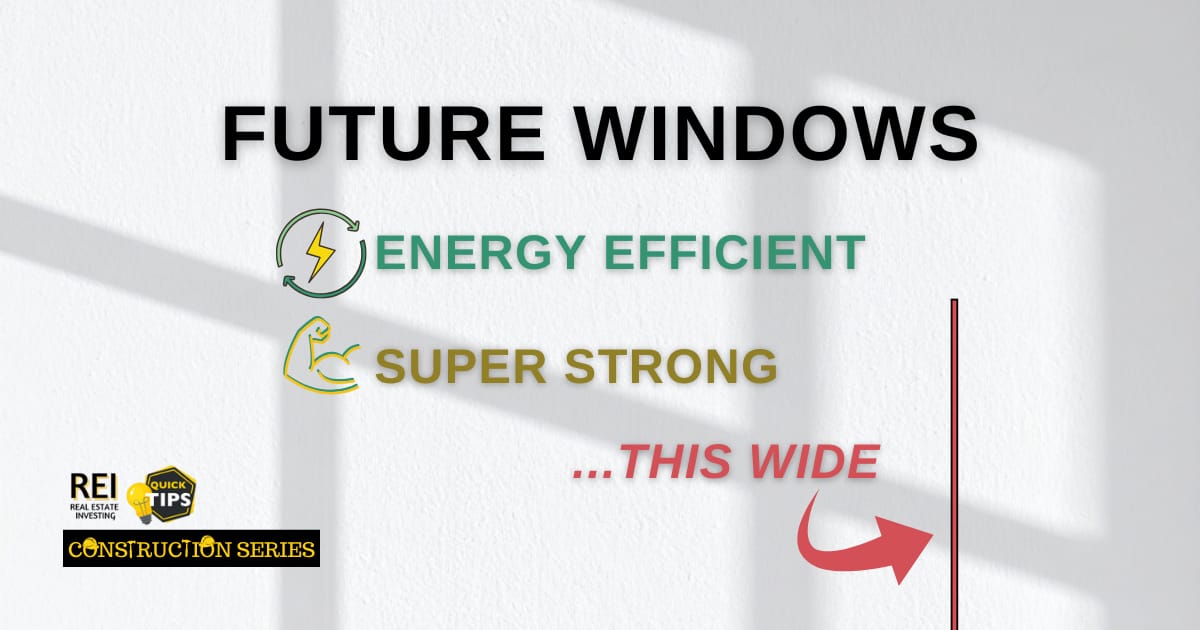- Real Estate Investing Quick Tips
- Posts
- What’s Thinner Than a Credit Card and Warmer Than a Wall?
What’s Thinner Than a Credit Card and Warmer Than a Wall?
This Window Tech Could Redesign Real Estate
Start investing right from your phone
Jumping into the stock market might seem intimidating with all its ups and downs, but it’s actually easier than you think. Today’s online brokerages make it simple to buy and trade stocks, ETFs, and options right from your phone or laptop. Many even connect you with experts who can guide you along the way, so you don’t have to figure it all out alone. Get started by opening an account from Money’s list of the Best Online Stock Brokers and start investing with confidence today.
Why Your Next Window Might Be Thinner Than a Credit Card

What if your window was thinner than a credit card—and insulated better than a wall?
That future is closer than you think.
🔍 A Quick Backstory
For decades, windows have been the weakest link in energy efficiency. Builders have improved frames, coatings, seals, and glazing—but glass has remained heavy, thick, and thermally leaky.
Enter Corning, the same company behind Gorilla Glass, and their new innovation: Enlighten™ Glass. Paired with Andersen Windows and others, they are reshaping (literally) how we think about windows.
💡 What Makes This Different?
Corning’s architectural glass tech takes inspiration from smartphones. Their ultra-thin, chemically strengthened glass is as thin as 0.5 mm (yes, thinner than a credit card), but strong enough to serve as a core layer in insulated glazing units (IGUs).
Combined into triple-pane (or even quad-pane) windows, this thin center pane allows for:
Improved R-values rivaling walls
Lower weight than traditional triple-glazed units
More natural light thanks to thinner glass stacks
📊 Performance
Most window ratings use U-factor (lower is better), which can be converted into R-value. Modern "thin triple" window units using ultra-thin center panes + gas fills can exceed R-7 to R-10 performance. That rivals (or beats) the R-value of some walls.
Even better: because these center panes are so thin, the window doesn’t look or feel like a triple.
💵 What About Cost?
Right now, advanced thin-pane windows carry about a 20% premium over high-end standard double-pane windows. But there are upside efficiencies:
Less raw material (glass)
Reduced frame load (less structural bracing)
Lower shipping weight
As production scales and manufacturers adapt, the cost curve is expected to drop.
🧱 Retrofit vs. New Construction
This tech will hit new construction first. Most existing window frames aren’t designed to hold triple/quad glazing, especially deeper IGUs. But for high-end remodels or custom replacements, the demand is real—especially with energy prices climbing.
Replacement window opportunities are huge. If a thin, ultra-efficient IGU could be dropped into a standard double-pane frame, it would revolutionize the market. But most manufacturers haven’t cracked that yet.
🏗️ Where We Are Now
Corning Enlighten™ is being rolled out through select manufacturing partners
Glaston TPS® is producing triple-glazed units with 0.5 mm center panes
Regency Triple windows are projected to launch in the UK in 2026
Architects and builders in the passive/green building space are early adopters
🧠 What to Watch For
New product announcements from Andersen, Marvin, or Pella
Energy code updates that recognize thin-triple windows
Any attempts to adapt this tech for mass-market replacements
🏁 Final Thought
Windows have long been a design compromise: beauty vs. energy loss. But with thin-glass tech, we’re heading toward a world where you can have floor-to-ceiling glass with zero thermal guilt.
It’s going to change not just energy bills—but architecture itself.
Want more like this every Saturday? You know what to do.
Sources:
Where to Invest $100,000 According to Experts
Investors face a dilemma. Headlines everywhere say tariffs and AI hype are distorting public markets.
Now, the S&P is trading at over 30x earnings—a level historically linked to crashes.
And the Fed is lowering rates, potentially adding fuel to the fire.
Bloomberg asked where experts would personally invest $100,000 for their September edition. One surprising answer? Art.
It’s what billionaires like Bezos, Gates, and the Rockefellers have used to diversify for decades.
Why?
Contemporary art prices have appreciated 11.2% annually on average
…And with one of the lowest correlations to stocks of any major asset class (Masterworks data, 1995-2024).
Ultra-high net worth collectors (>$50M) allocated 25% of their portfolios to art on average. (UBS, 2024)
Thanks to the world’s premiere art investing platform, now anyone can access works by legends like Banksy, Basquiat, and Picasso—without needing millions. Want in? Shares in new offerings can sell quickly but…
*Past performance is not indicative of future returns. Important Reg A disclosures: masterworks.com/cd.


